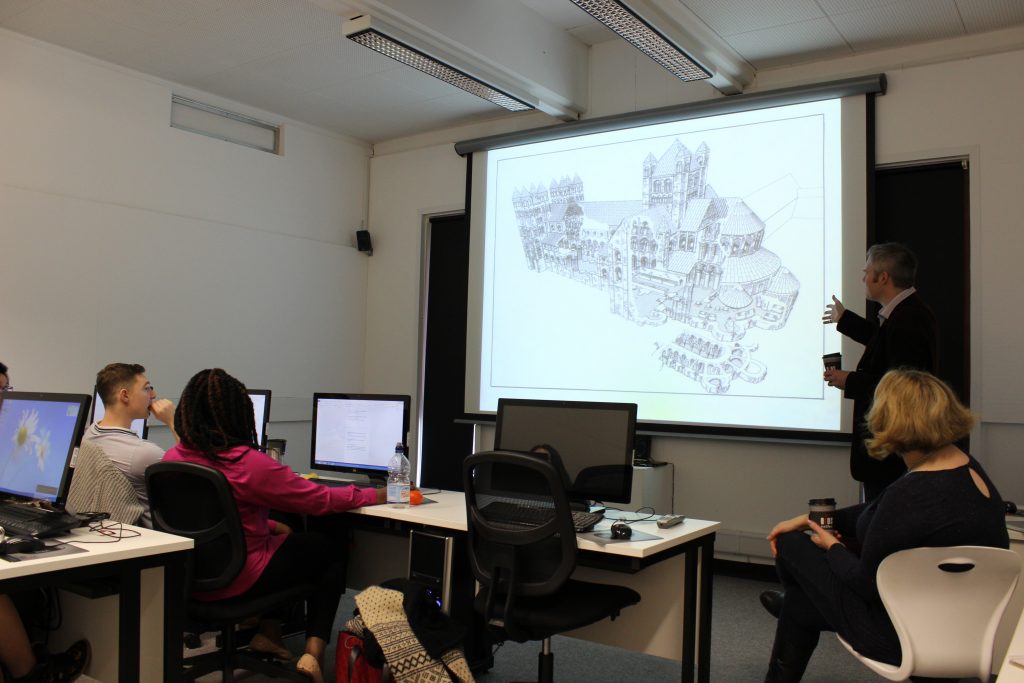Architectural Visualisation students were treated to an insight into the past when English Heritage visited the school to talk about the nearby St. Augustine’s Abbey in Canterbury. The archaeological site is the subject of the students’ latest project, Virtual Cities, which redirects techniques and skills typically used to visualise prospective architectural proposals, to reanimate the past.
The project will see students rebuild the Abbey to its former glory prior to the suppression by King Henry VIII in the 1530s. The virtual model is designed to be fully navigable, allowing audiences the chance to experience the abbey complete with interpretations of the interior spaces and decoration.
Howard Griffin, Programme Director of the MA Architectural Visualisation courses said, “This is an exciting collaboration between the School of Architecture and English Heritage. Our students have the chance to work with archaeological experts in recreating the past. Much of the learning students are engaged with on this course is aimed at visualising the future. However, we can use these same processes and skills to recreate the past as well. Using real-time games technology allows audiences to navigate their way through a space in a way which cannot be achieved with simple computer animation.”
The project presents new challenges to the students, who ordinarily can rely on accurate architect’s drawings as a source of information. Most of the Abbey and outer buildings were destroyed and little evidence remains of large parts of the site. Collections Curator at English Heritage, Rowena Willard-Wright explained, “This project will be like building a jigsaw puzzle, but with only 3 pieces remaining.”
The first stage of the St. Augustine Abbey project is due to be completed by spring, with additional work and detailing to be completed later.

